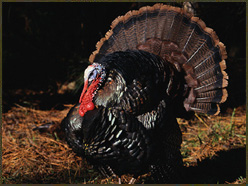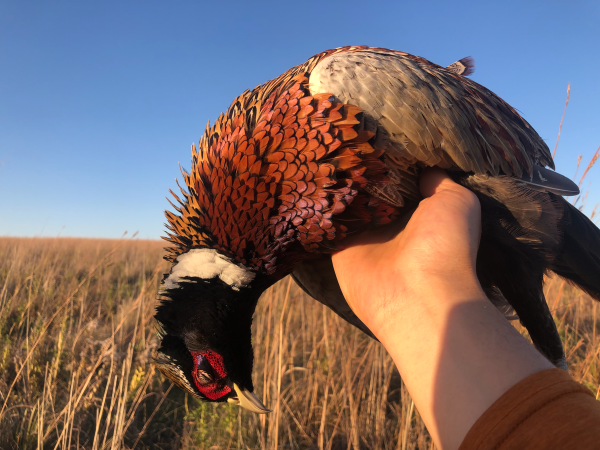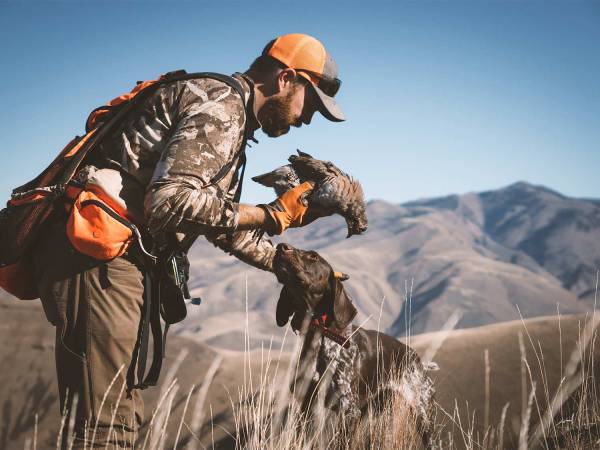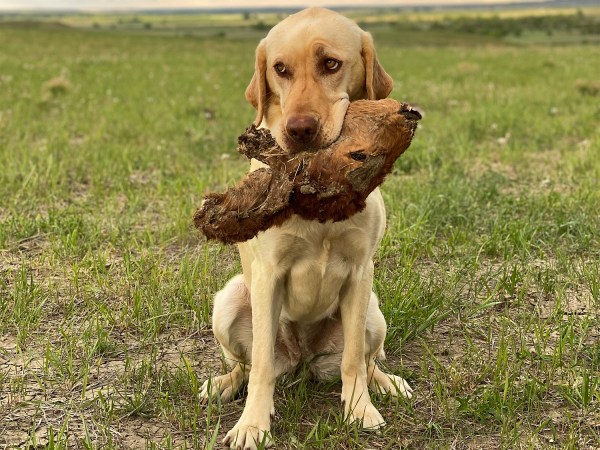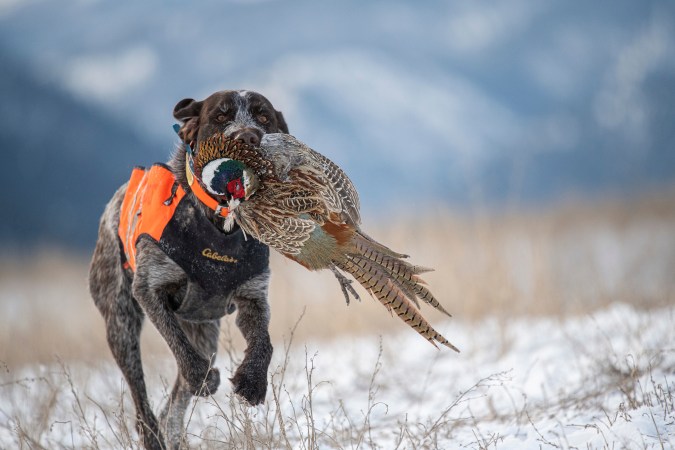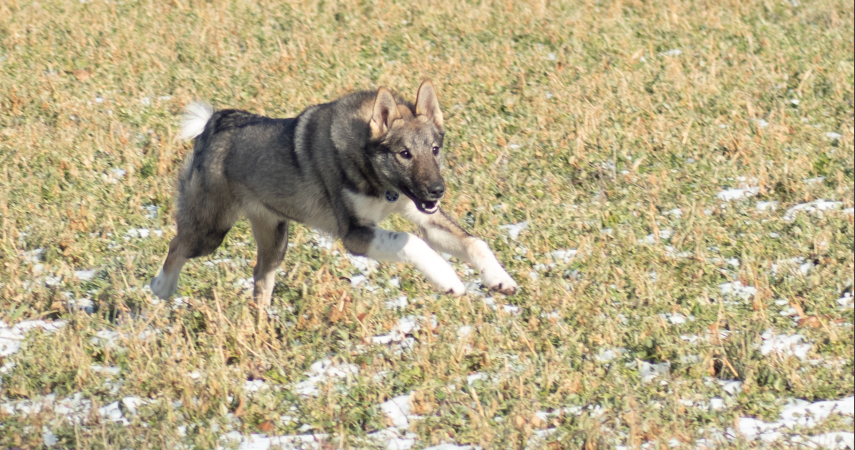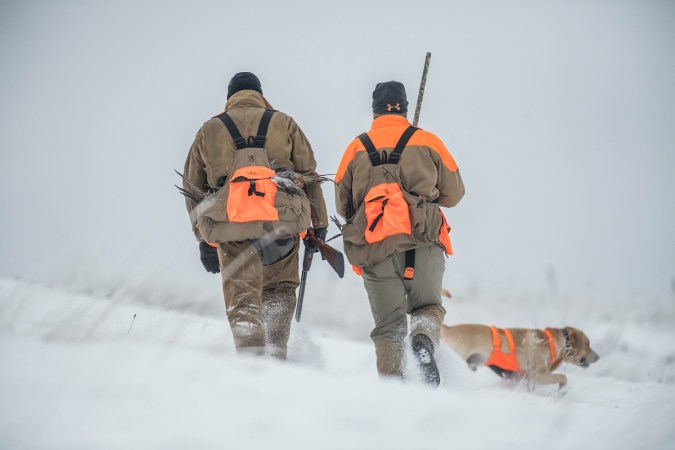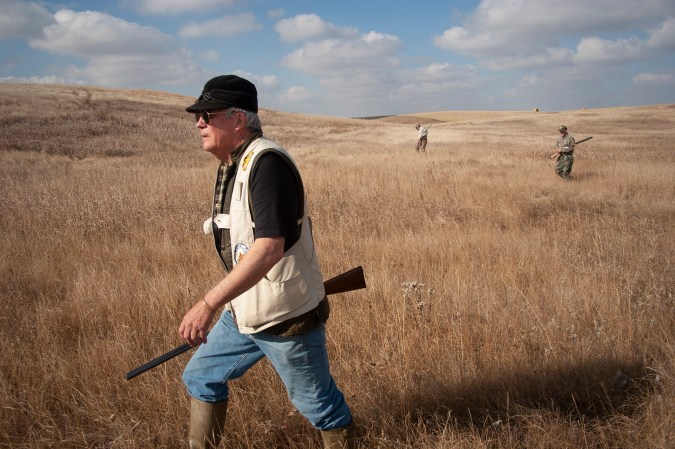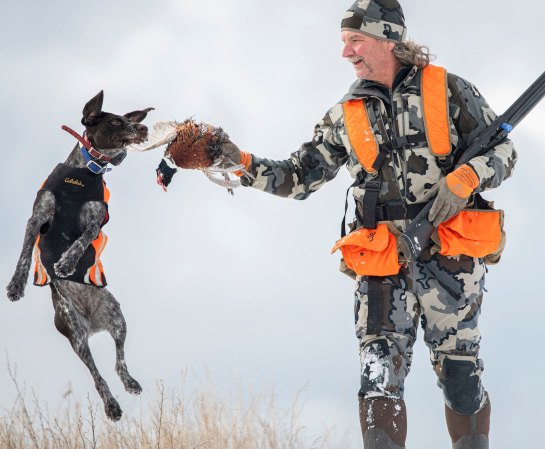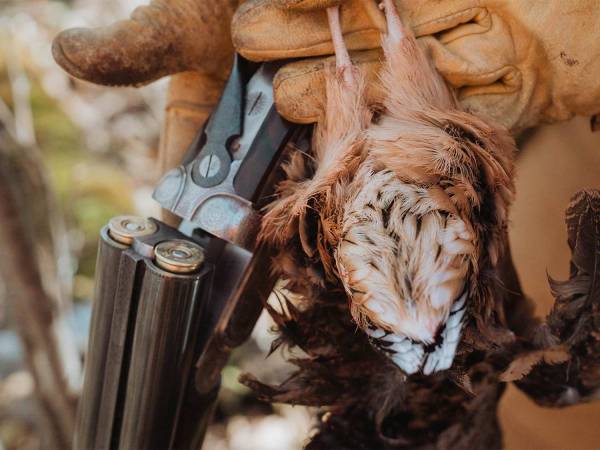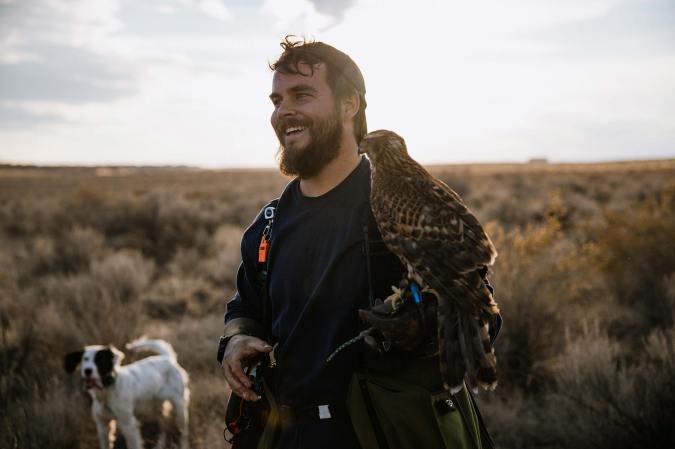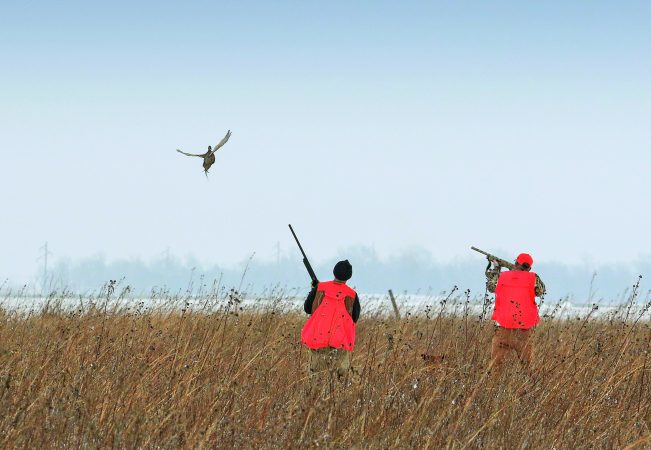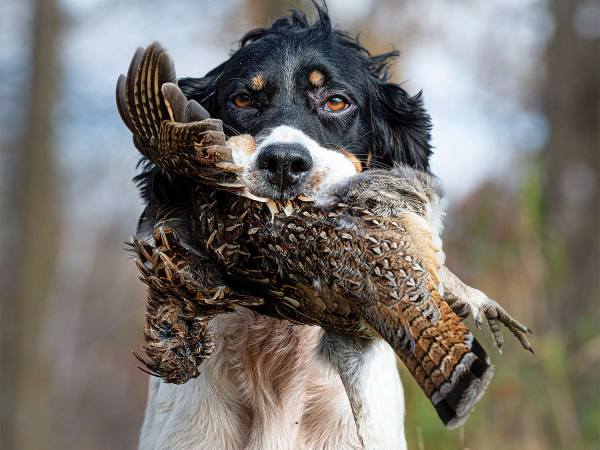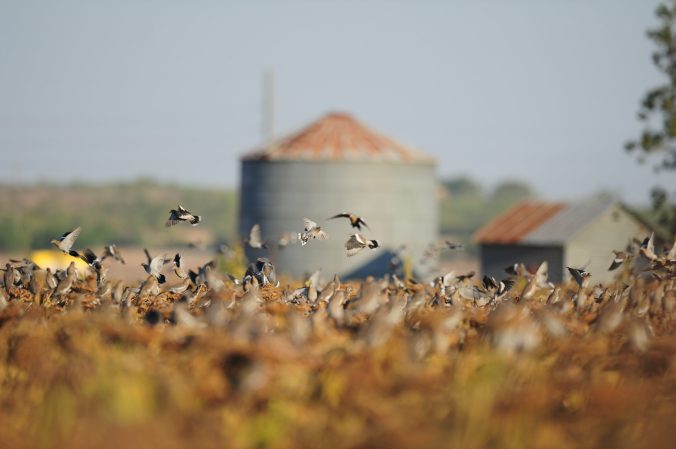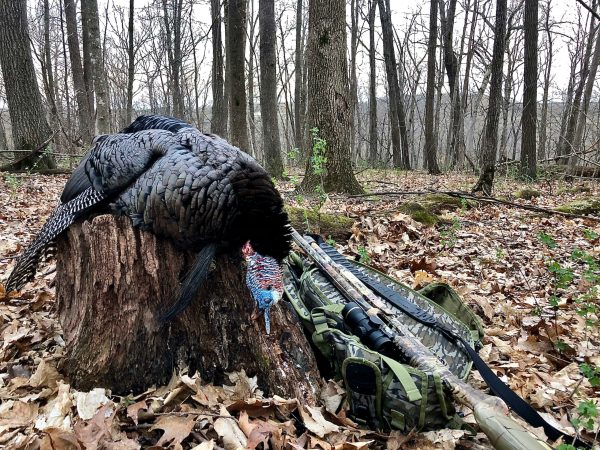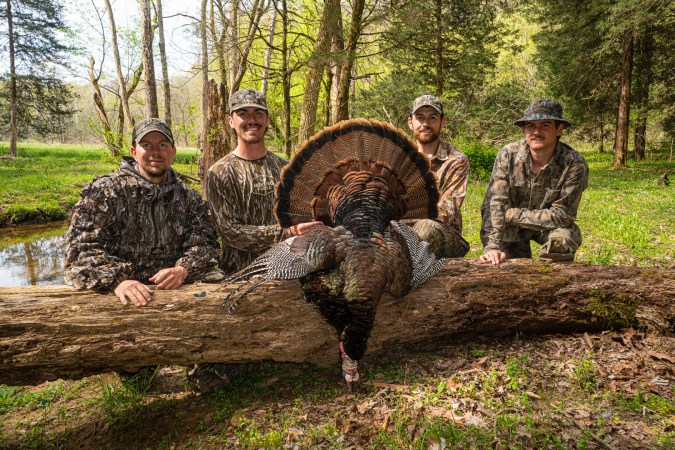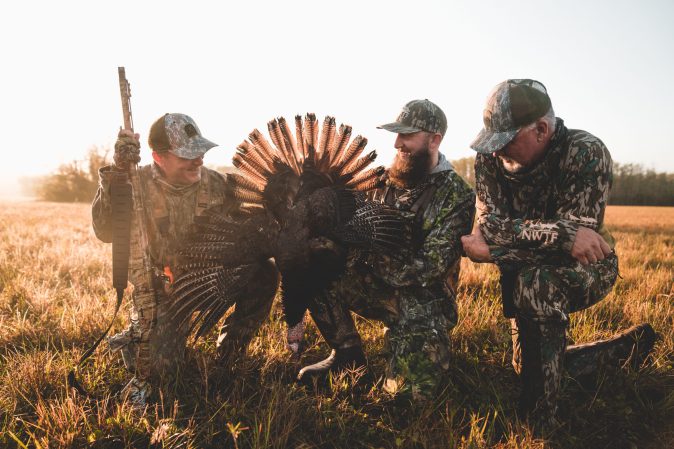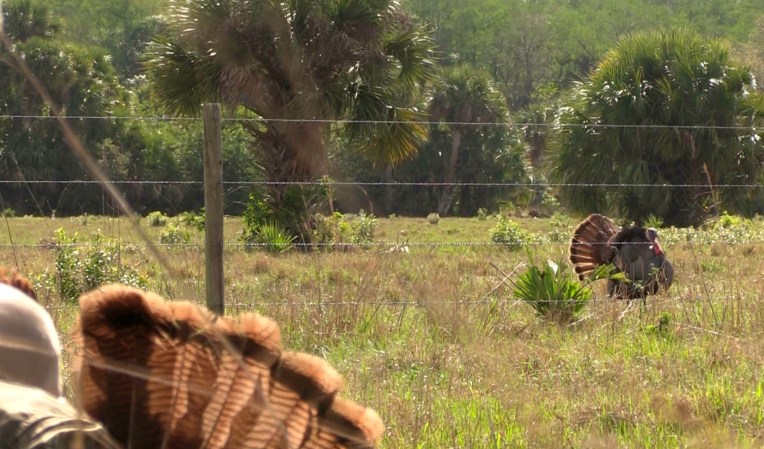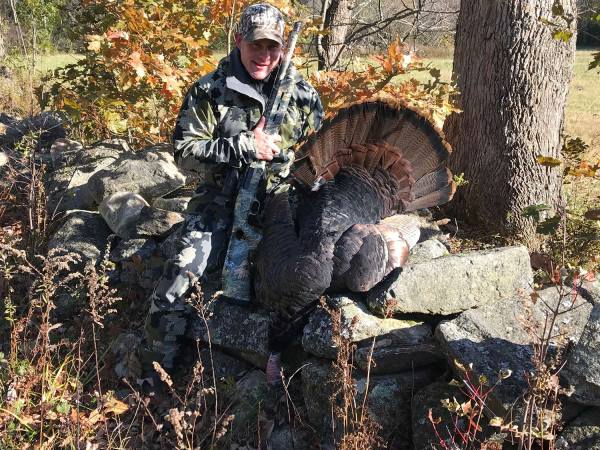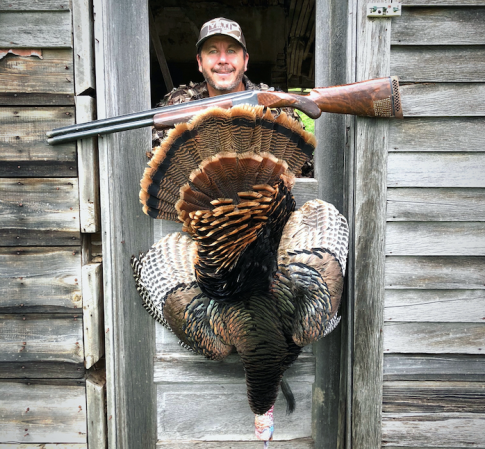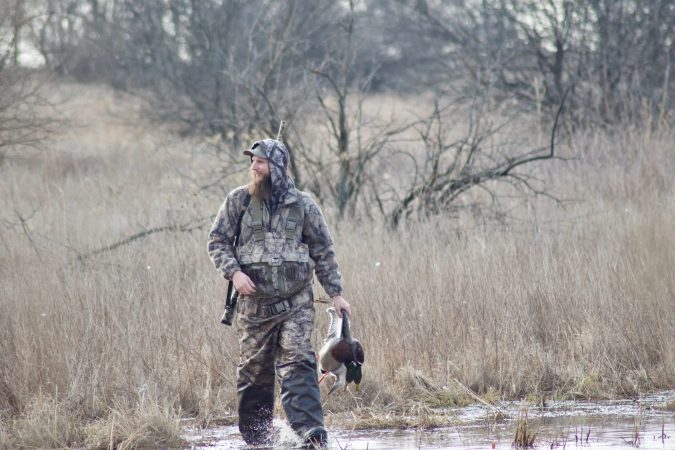Spring turkey season is just about as perfect and predictable as hunting gets.
All you need to do is roost a bird at sundown, knowing it will be there all night, and then shoot it in the morning when it flies down. You know the precise whereabouts of the quarry, and if you do your part right you’ll score. Well, maybe. According to Ronnie “Cuz” Strickland of Mossy Oak, one of the best turkey hunters in America, “roosted ain’t roasted.” How right he is.
A particular sequence of events must unfold in exactly the right order for you to take a roosted bird. First, you must locate a gobbler late in the afternoon when he flies up. Then you must mark his roosting tree so you can find it in the dark the following morning. Next, you must be able to sneak in close in the morning without being seen or heard by the bird, and then you must be able to call correctly to attract the gobbler to your location. Finally, you must be able to make the shot count. But let’s start at the beginning.
Where to Look
How to find a roosted bird? That depends on the subspecies you’re hunting. First, be aware that birds usually fly up a little after sundown. I’ve seen turkeys fly to roost trees when it was almost too dark to see. If you hunt Osceolas in Florida, concentrate your efforts around water, since this subspecies of birds often likes to roost in cypress trees over water, presumably because they feel safer from predators there. Easterns and Rio Grandes typically like to roost on ridgetops, or in prominent trees bordering fields. Merriam’s prefer roosting in tall trees, especially ponderosa pines, at the ends of long ridges. At the end of the day, position yourself in a place that has good roosting potential. Listen quietly for the heavy flapping of birds flying into a tree. Or use an owl call or crow call to evoke a response from gobblers that may have already roosted for the night.
**Mark the Roost Tree **
Locating the roost tree in the dark hours preceding dawn on the day you hunt poses problems. Before you leave the roost area in the afternoon, try to pinpoint the site of the tree with landmarks you can find in the dark, such as creeks, fence lines, logging roads, etc. Try to use your flashlight sparingly. One hunter I know marks roosted birds with a GPS unit, but you can use bright surveyor’s ribbon, or even strips of white sheeting, to mark your route to the roosted birds. Just be sure to space the markers so you can see from one to the next, and to take them down on the way back out.
Moving In
A big dilemma is knowing just how close to approach the tree and precisely where to set up. You can resolve this problem by glassing thoroughly over an area where you’ve roosted birds in the afternoon. From your vantage at a distance, try to find the place you want to set up in the morning. Ideally, you want to be within good calling range, which may be a minimum of 100 yards away, depending on cover and terrain. Avoid the temptation of getting too close and being seen. As you no doubt know, turkeys have superb hearing and are able to hear you from a surprisingly long distance.
Calling a Roosted Bird
The big question is, is the gobbler alone or with hens? If you heard or saw several birds flying up to the roost in late afternoon, you can assume the tom has company. However, if you heard the bird gobble in the morning and have no idea as to his social status, you’ll have to take your chances. The biggest mistake a hunter can make with a roosted bird is calling too much and too loudly. Use the “tree yelp,” a very soft hen call. If the gobbler responds, match his calls. The more he calls, the more you should call. If he slows down, quit calling. Let him come looking for you.
Henned Up
Hunters dread this scenario-the gobbler is roosted with several lady friends. Big dilemma. No tom in his right mind will leave hhis hens for an unknown hen (you). Overcome that by calling vigorously and trying to upset the boss hen, enticing her to your location. Invariably, the gobbler will follow. Much of your strategy will depend on the gobbler’s enthusiasm. If he quits calling, it might be wise to leave him and try for another bird. If he calls fairly consistently, hang in and continue to answer. When birds suddenly become quiet after leaving the roost, that does not mean they’ve left the area. They’re probably feeding, and the gobbler might be breeding a hen. Be patient, since the tom might eventually respond to your calls. And don’t expect the gobbler to sound off when approaching. He might come in quietly.
